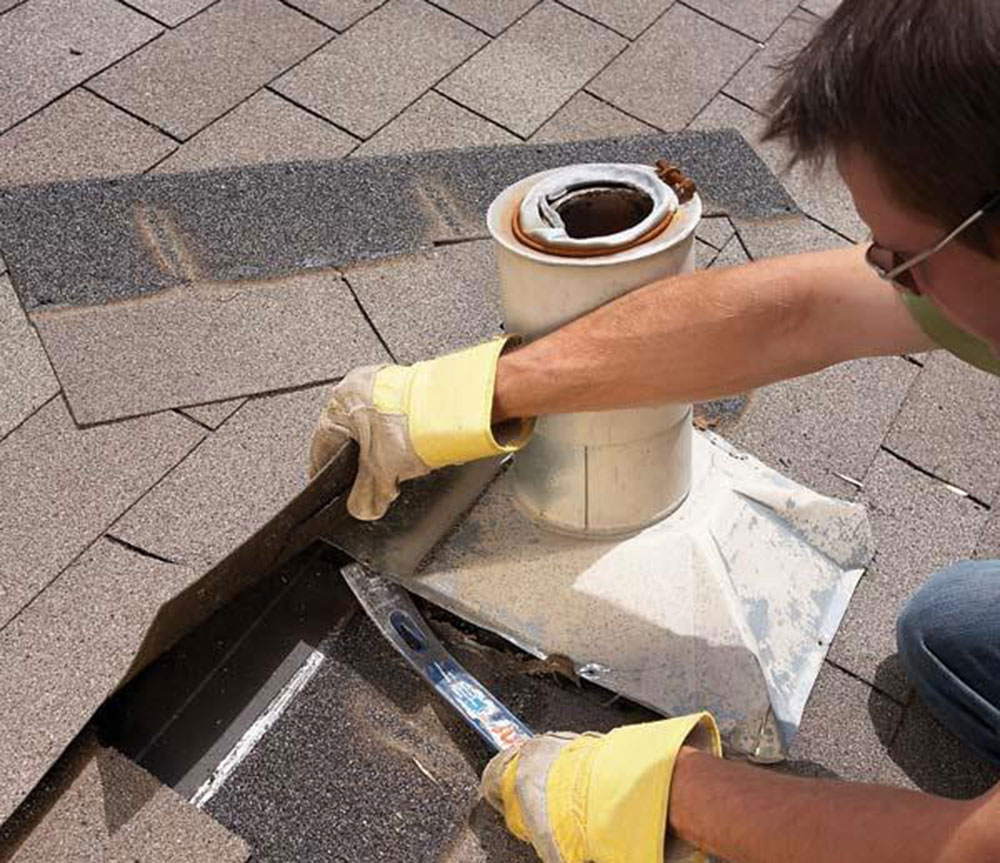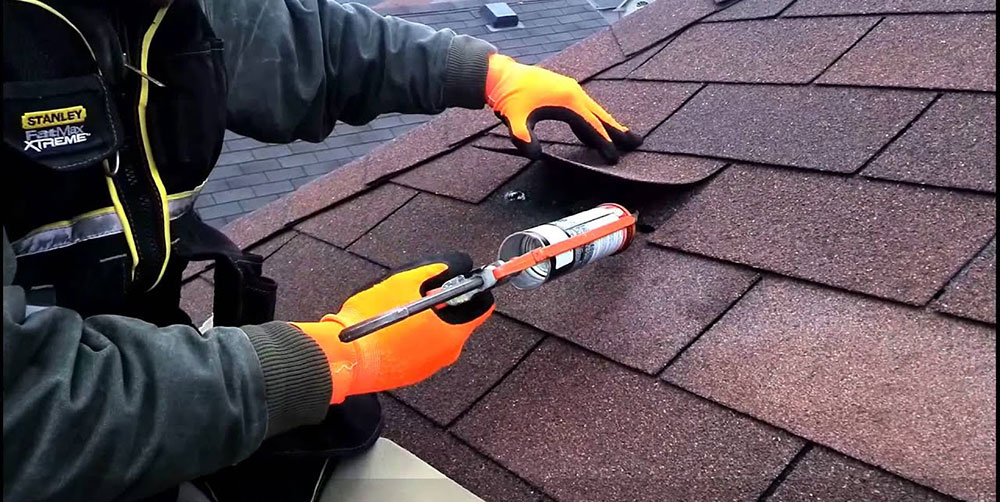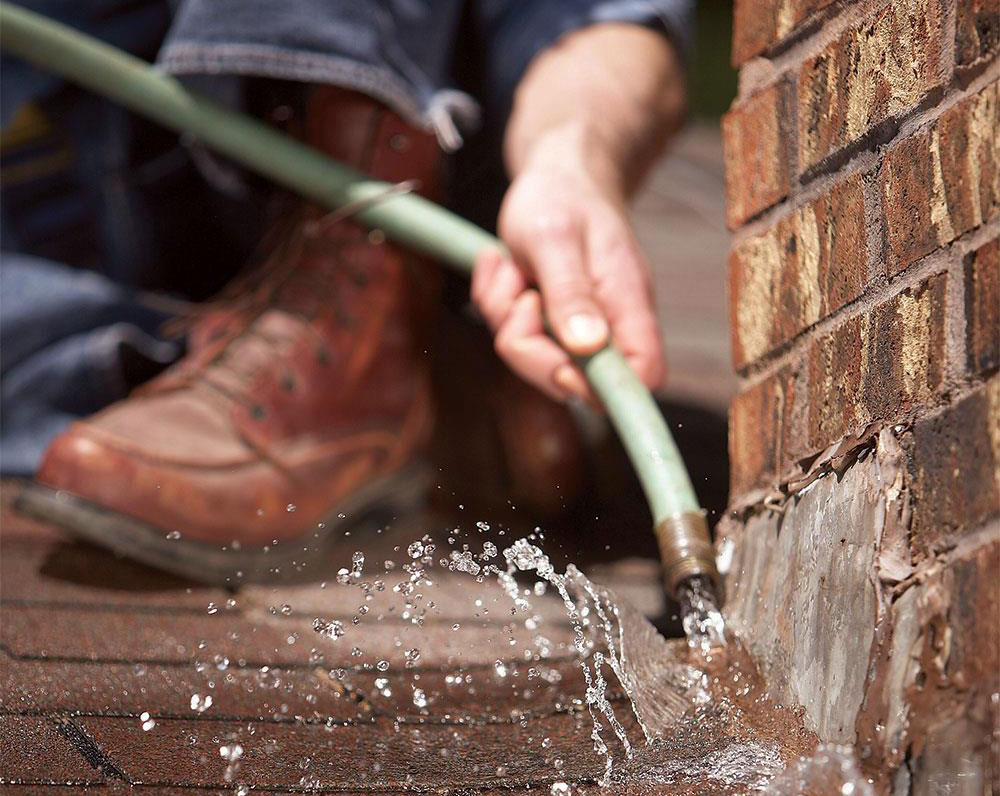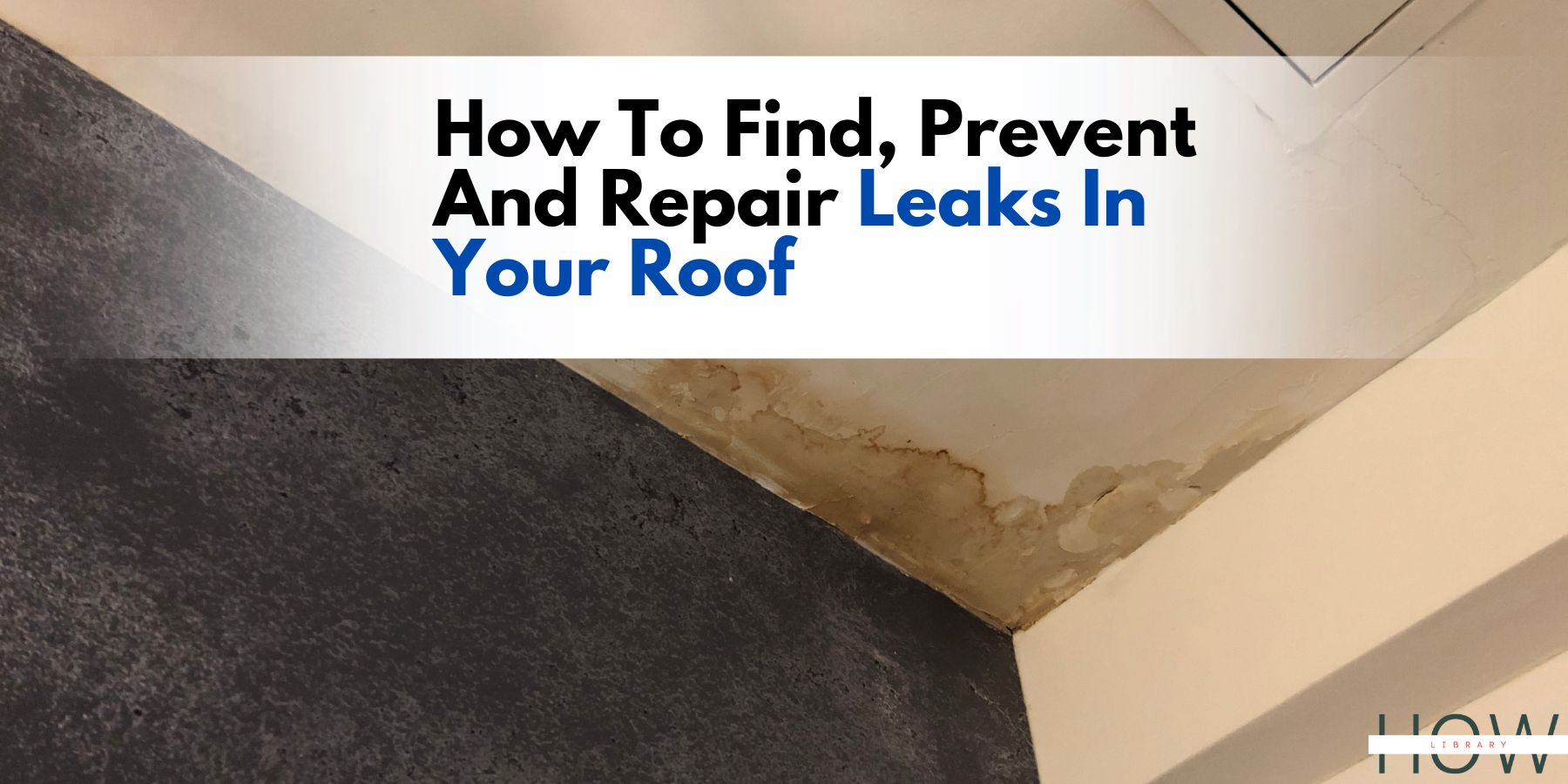Even small roof leaks can cause serious damage to your home, so it’s very important to fix a leaking roof and take all the necessary measures to prevent the leaking on your roof. Leaking roofs can lead to mold and mildew that are known to cause health problems.
Not only health hazards and structural damages, but roof leaks are also a nuisance in the house. It’s annoying to hear the constant dripping of water in the room, especially when you’re sleeping or concentrating on something very important. Also, the water stains they leave on the ceiling are annoying and unsightly. This will affect the overall aesthetic of your home.
Fixing and preventing roof leaks will help you maintain the integrity and appearance of your home. The problem should be addressed quickly before they cause bigger problems in the house or lead to expensive repairs. This article will share helpful tips on how to repair roof leaks and how to prevent them.
Causes Of Roof Leaks
Poor Installation
Most of the time, roof leaks are caused by poor installation. You have to hire experts to install your new roof or you will end up with leaking problems often. Select the right roofing that is watertight and ensure there are no gaps in the roof caps or in the flashing. You might not have leaks immediately after installing a new roof, but with time, the signs will start showing up. Make sure to pick the right professional and ensure a warranty comes with their services.
Wear And Tear
Roof leaks are more likely to come from an old roof; cities with harsh weather conditions will expose the roof to wear and tear as time goes on. Regular checkups and maintenance are required in such areas to protect your roof from leaking. If you want to avoid wear and tear, you must deal with small problems before they turn big. Damaged and missing shingles must be replaced as soon as possible to prevent further damage to the roof. Also, at some point, you have to replace your old roof with a new one if you want to prevent roof leaks.
Loft Condensation
Lack of ventilation in the loft can lead to condensation problems. It causes moisture build-up, which will eventually turn into drips and then cause leaks from the room. This normally happens in the lost space since it is the highest point on the roof. In order to prevent this, you have to install roof ventilation to allow moisture to escape from the loft space. Insulating the room is another great way to keep the loft area at a regular temperature.
Gutter Problems
Gutters provide a route for rainwater to escape; if they’re blocked, the water will be trapped and cause roof leaks. Your gutter can be blocked with debris to let the water remain in the pipes and then start leaking. When the gutter is blocked, and more water flows from the roof, it will overflow and drench the walls and roof with moisture. This will lead to water stains, and you will have mold in the house. The best way to avoid gutter problems is by checking the gutters regularly, especially after a heavy storm. Make sure there is a clear passage for water.
How To Repair Roof Leaks

Locate The Cause/Source
This is the first step to fixing your roof leaks; you should identify what’s causing the problem immediately. You should identify the source that’s letting water into your house. You should start by checking the roof to make sure that there isn’t any damage causing the problems.
When water is dripping from the ceiling, most people will only assume the cause of the problem is a leaking roof. There are other potential sources to check that can cause the problem. Check plumbing problems, clogged gutters, and cooling and heating unit problems. When you identify the source of the problem, you can now take the right action to repair the leak.
Prepare The Leaking Area
The next thing you want to do is to prepare the area for repair; this will help you fix the problem fast, and you can stop further damage. The area under the leak should be mopped, and you need to place a container that will hold the water from the leak, or you can use pails to hold the water from the leak.
Suction horses can also be used if water comes from the floor above you. All appliances and furniture should be cleared along the way or you can use plastic covers to keep them dry.
Apply Roofing Tar
A roofing tar works best if you’re using removable tiles on your roof. You need to remove the tiles and spot the leaks; then, use roofing tar to seal the leaks easily from the inner ceiling. Roofing tar works best if supported with materials like single or plywood. You should push the plywood against the area that has the leak, and then you can apply the roofing tar to dry the spot.
Using PE Plastic
If it’s harder to spot the leaking source, PE (Polyethylene) Plastic is the best option to fix roof leaks. You need to measure it and then apply the PE plastic on your roof. It’s advisable to extend the area as much as possible in order to avoid future leaks. Staples are used for attaching the PE plastic to the area; you then keep the PE plastic in place with nails. You should ensure the PE plastic is very thick, which will help shield your room from water.
Install New Shingles
The condition of your shingles influences the ability of your roof to stop leaks. If your shingles have bruises, curls, and missing pieces, they’re likely to leak water from the outside. If your shingles are old or damaged, you should replace them with new ones.
You have to use safety gloves when removing the old shingles and put on your rubber boots when working on the roof to avoid slipping. The old shingles can be removed with a hammer nail removal hook. You should install the new shingle with roofing tar and nails. You should understand that this should be used as a temporary fix before you find a better alternative.
Using Tarpaulins
Tarpaulins can be used to cover areas you suspect to have roof leaks; They’re used as a quick fix for roof leaks and installing them is really easy. The number of leaks you have will determine the size of the Tarpaulins you will use. Multiple taps can be used if there are many leaking spots and the roof is very big.
It’s important to use a heavy concrete block to anchor the tarp; it should be extended over the ridge so as to keep it in place during strong winds and heavy rain. You should use nails for a quick fix if there is a mild storm.
Seal Joints
Roof leaks can come from gaps on joined surfaces; if you find the leaks coming from joints, you need to seal the area with cement or sealant. If the roof leak comes from a joint, it’s easier to deal with because you need to use a sealant to fix the problem immediately. When using a sealant, you must clear all debris around the area before you begin the application.
How To Prevent Roof Leaks

Choose The Right Materials
The roofing materials used play a great role in preventing leaks from your roof; You can choose from a metal roof, concrete roof tiles, or a tiled roof. Some of these materials are more vulnerable to leaking than others. Concrete and metal roofs are tougher, and they’re less likely to cause leaks from the roof. The type of roofing design you’re using also plays a role in roof leaks; A flat roof will gather more water puddles than a slope. Consult your contractor if you want to make the best decisions that protect your home from rainstorms and harsh weather conditions.
Maintain Regular Inspections
Roof leaks don’t happen at once, and there are some factors that cause leaking on your roof. You can tackle these problems with proper inspection before they cause further damage. You should be able to spot minor problems and fix them before they turn into something big.
If you don’t know how to spot these problems, consider consulting experts to inspect your roof regularly. They can spot minor problems and provide a fix to avoid roof leaks in the future.
Check For Damaged And Missing Shingles

It has already been mentioned that missing and damaged shingles are among the causes of roof leaks. You can look out for them on a regular basis so that you can fix them immediately once spotted on the roof. You should give utmost attention to penetration sealing like skylights, vent stacks and chimneys.
Make sure the sealants are always tight to prevent any potential leaks they can cause. If you have to replace the damaged shingles, you should consider doing that as soon as possible. Also, shingles should be checked after heavy rain storms or snowfall.
Don’t Walk On Your Roof
Most roofs aren’t designed to hold your weight, meaning walking on them will damage the parts used in the construction. Most people will walk on the roof to access the gutter and eaves. It’s better to use a ladder when inspecting the gutter. Of course, it’s a must to inspect the roof on a regular basis, as mentioned above, but it has to be done right away to avoid creating problems.
Keep Trees And Shrubs Away From The Roof
Trees and shrubs should be kept away from the roof at all costs because moss can grow on your roof beneath the shingles. This will lift them, and even a slight lift can cause water to pass through shingles to cause leaking problems.
When there are tree branches on the roof, they can damage the roof by causing wear and tear, thereby scratching the roofing material during storms and winds. Also, they will cause debris to build up inside the gutters.
Using zinc stripes is one of the ways to prevent moss growth on the roof, and it’s always advisable to distance trees from the roof. If you have trees nearby with branches extending on the roof, you should trim them to prevent debris build-up and any threat that can pose roof leaks.
Use Ventilation System
Installing a proper ventilation system in the loft will ensure that air flows to your roof. The underside will be protected and remain dry to avoid moisture condensation, which can cause water drips. Without enough ventilation, moisture will build up, and the roof’s foundation will be compromised.
Add Wind Anchors
Whether you’re experiencing inclement weather or not in your city, adding wind anchors to your roof is always advisable. They should be installed properly on the roof’s edge to provide additional support. They will also help in preventing leaks in your room.
Use Waterproof Barriers
There are vulnerable areas prevalent to leaking; These include eaves, vents, dormers, and skylights. You should provide a waterproof barrier in these areas to prevent water from dripping from your ceiling even if the roof is leaking water because a barrier is installed to prevent the water from passing through the ceiling.
Check Roof’s Flashing
When we mention roof flashing, we’re talking about every metal or vinyl piece used to connect your roofing parts. These include chimneys, skylights, vents and all the areas that connect the roof and wall. These areas are more vulnerable to leaks than other areas, and that’s why you have to inspect them regularly.
How to find leaks in your roof

Finding leaks in your roof can be a daunting task, especially if you don’t have any experience in home repairs. However, with some knowledge and patience, you can locate and fix the leak yourself, saving yourself the cost of hiring a specialist. Here’s a step-by-step guide on how to find leaks in your roof:
- Look for visible signs of a leak. First, you should inspect your home’s interior for visible signs of a leak. Look for water stains on the ceiling, walls, or floors, as well as any peeling paint or wallpaper. Pay particular attention to areas around skylights, chimneys, and vents, as these are common sources of leaks.
- Check the exterior of your home. Next, take a walk around the exterior of your home and look for any visible signs of damage to the roof. Look for missing or damaged shingles and any cracks or holes. If you have a flat roof, look for any standing water or areas where the roof seems to be sagging.
- Inspect the attic. If you don’t see any visible signs of a leak on the interior or exterior of your home, the next step is to check the attic. Go into the attic with a flashlight and look for any signs of water damage, such as water stains on the beams or water dripping from the roof. Pay particular attention to areas around vents and chimneys.
- Look for the source of the leak. Once you’ve identified the general area where the leak is coming from, it’s time to find the exact source of the leak. This can be tricky, as the water may come from a different location than where it’s leaking into your home. To help locate the source of the leak, try the following techniques:
- Follow the water trail. If you can see a trail of water leading from the leak to a specific location, follow it to the source.
- Use a water hose. If you can’t see a visible water trail, try using a water hose to simulate rain. Start by spraying the areas of the roof that are most likely to leak, such as around skylights, chimneys, and vents. Then, go into the attic and look for any signs of water.
- Use a mirror. If you still can’t locate the source of the leak, try using a mirror to reflect sunlight onto the roof. This can help you spot any small cracks or holes that you might have missed.
- Repair the leak. Once you’ve found the source of the leak, it’s time to repair it. The repair process will vary depending on the type of roof you have and the severity of the leak. Here are a few general tips:
- Patch small holes. Use roofing cement or sealant to patch the area for small holes or cracks. Apply the patch in a thick layer and smooth it out to ensure a good seal.
- Replace damaged shingles. If you have missing or severely damaged shingles, you’ll need to replace them. First, remove the old shingles by prying them off with a flat tool, such as a putty knife or pry bar. Then, slide the new shingle into place and nail it down.
- Repair larger holes. For larger holes or extensive damage, you may need to cut a patch from a piece of roofing material and use roofing cement or tar to secure it in place.
- Test the repair. Once you’ve finished the repair, it’s important to test it to ensure it’s effective.
FAQs
What Is The Common Cause Of Roof Leaks?
The common causes are; wear and tear, clogged gutters, damaged or missing shingles, and chimney damage. If these problems are not addressed quickly, they will eventually cause roof leaks in your home and other damages.
What Can Stop Rain From Coming Through The Roof?
The gutter is an essential component that prevents rain from coming into your home. If the gutter is pulling away or you notice some parts have rusted, it is failing and has to be fixed immediately.
Where Do Most Roof Leaks Come From?
You should keep your eyes on four areas; Chimney, vent pipes, missing shingles, and around skylights and windows.
What Materials To Put On A Roof To Make It Waterproof?
You can use a TPO roofing membrane, EPDM roofing membrane, or PVC roofing membrane.
Is It Normal For Roof To Leak During Heavy Rainfall?
If your roof leaks during heavy rainfall, it shows that you need to change your shingles.
Can Walking On The Roof Cause Leaks?
Yes, walking on the roof will damage the parts and eventually cause roof leaks.
What Roofing Style Is More Prone To Leaks?
Flat roofs are more prone to leaks; they’re also called “low-sloped roofs.” Steep-sloped roofs are the best style to avoid leaks in your home.

